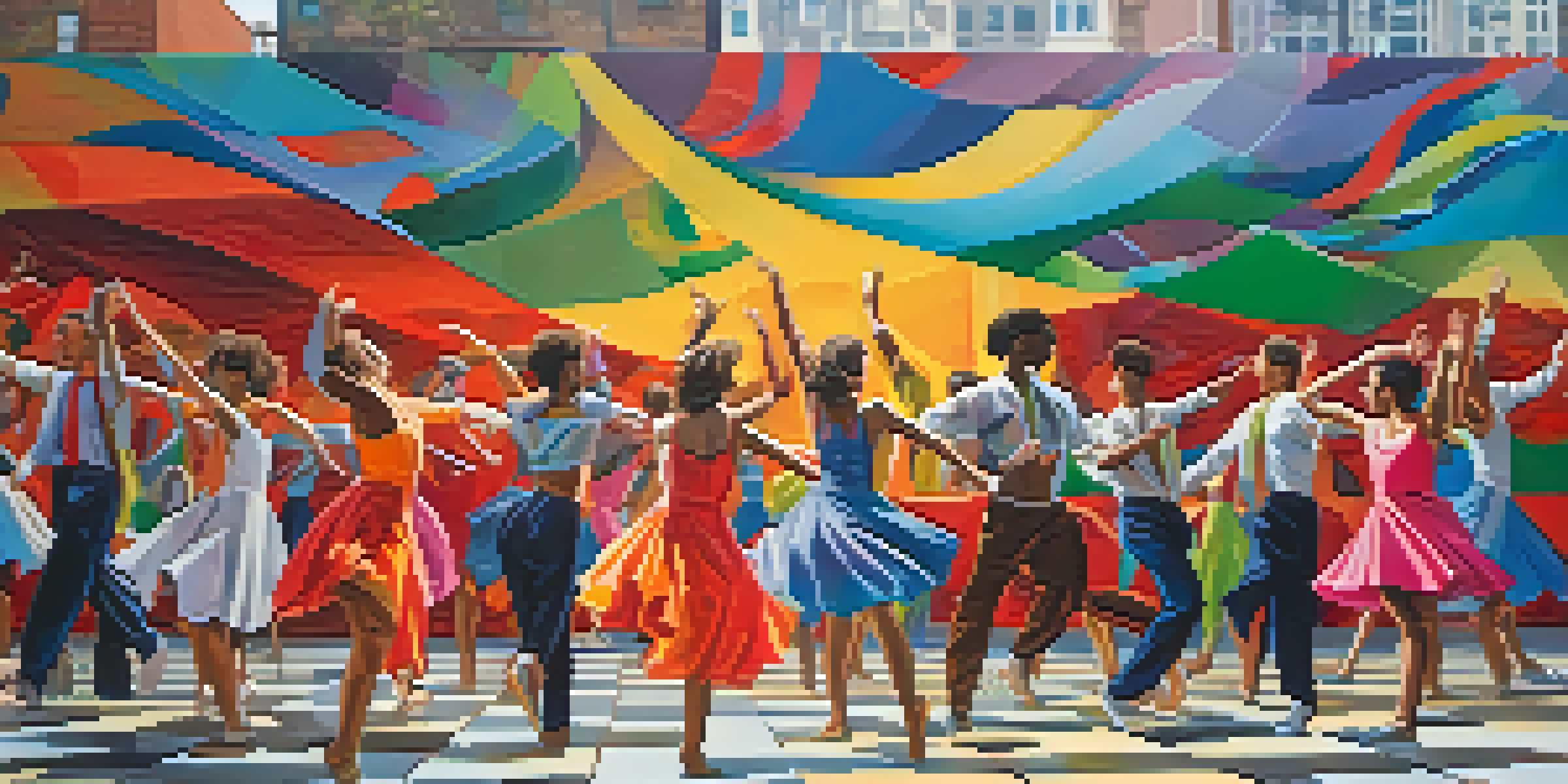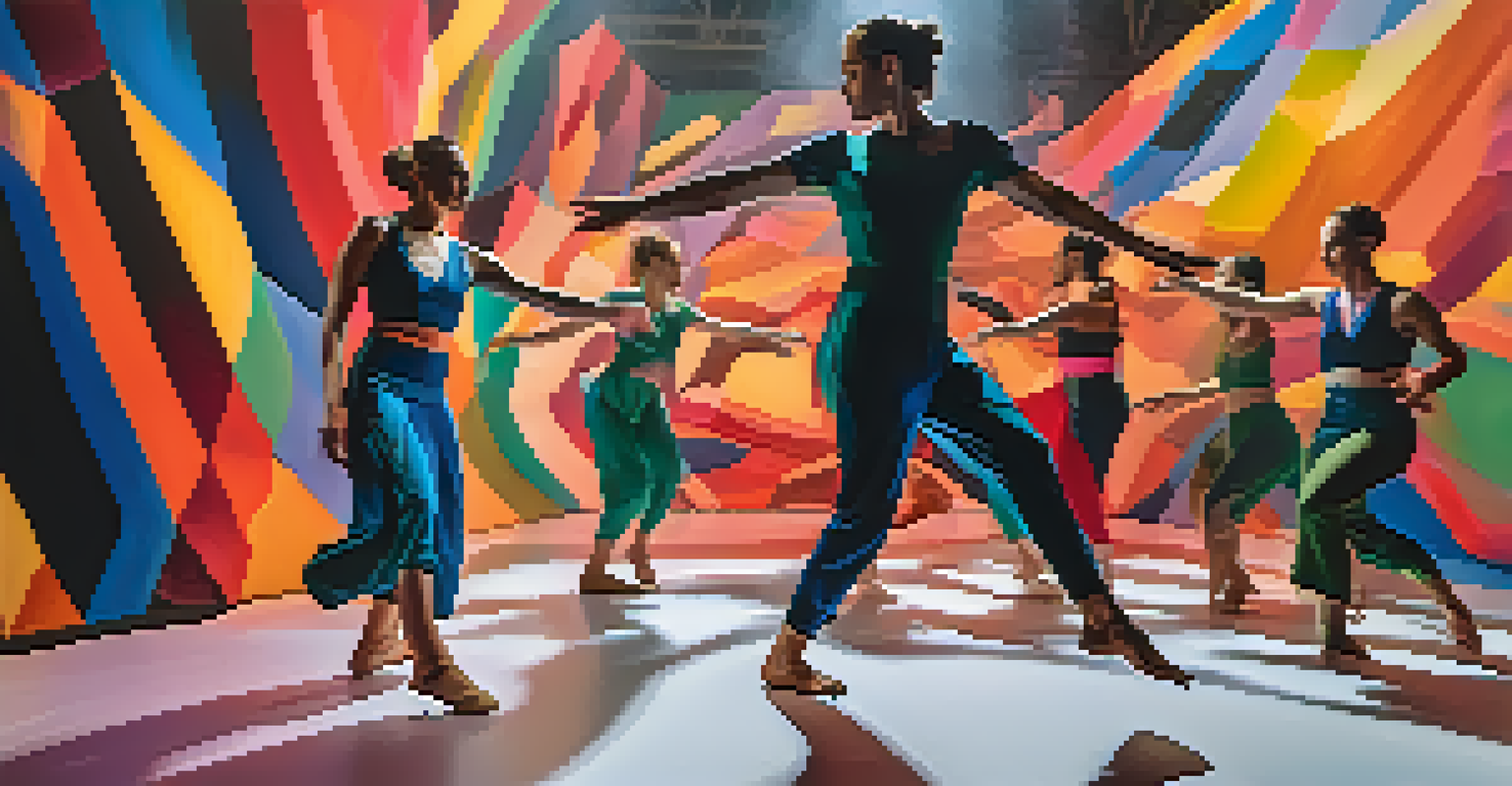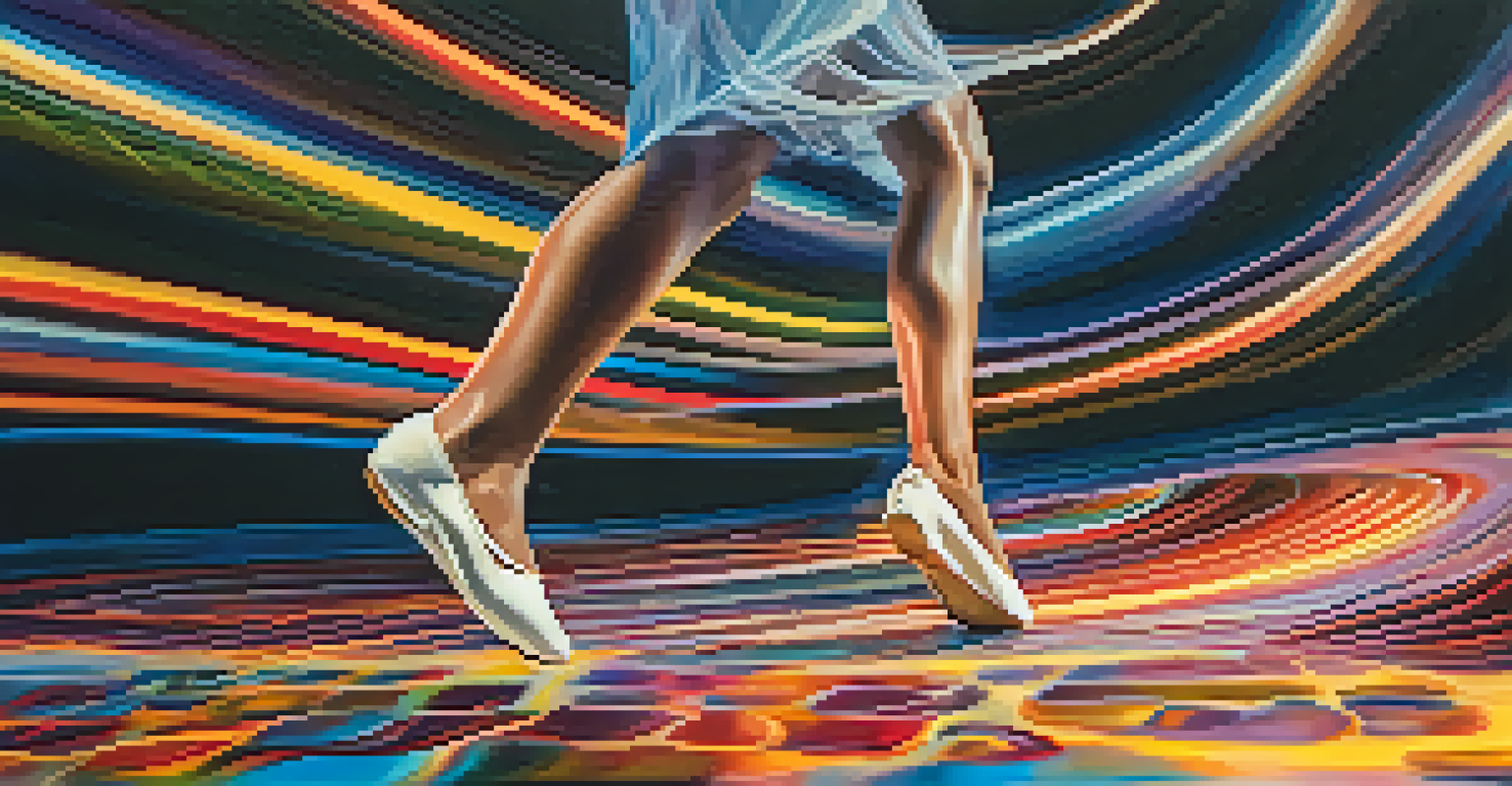The Influence of Contemporary Art on Dance Collaboration

Contemporary Art: A Catalyst for Dance Innovation
Contemporary art has become a vital source of inspiration for dancers and choreographers. By breaking traditional boundaries, artists are encouraging dancers to explore new forms of movement and expression. This collaboration often leads to innovative performances that challenge audiences' perceptions of both art and dance.
Dance is the hidden language of the soul.
For instance, the rise of immersive art installations has created opportunities for dance to be integrated into visual experiences. Dancers can transform spaces and engage with audiences in ways that traditional performances might not allow. This synergy not only enhances the viewing experience but also expands the narrative possibilities within both mediums.
Moreover, contemporary art encourages dancers to think outside the box, experimenting with different styles and techniques. The fluidity between art forms fosters a creative environment where dancers can push their limits, ultimately enriching the art of dance itself.
Collaborative Projects: Bridging Artists and Dancers
Collaborative projects between visual artists and dancers have become increasingly common, creating a dialogue between the two disciplines. These partnerships often result in unique performances that merge choreography with visual storytelling. Such collaborations can breathe new life into both art forms, making them more accessible and relatable to audiences.

An example of this is the collaboration between choreographers and installation artists, where dance is performed within art exhibits. This interaction not only captivates the audience but also invites them to reflect on the relationship between movement and visual art. The result is a rich tapestry of creativity that challenges conventional viewing experiences.
Dance Inspired by Contemporary Art
Contemporary art encourages dancers to explore innovative movements and expressions, resulting in performances that challenge traditional perceptions.
As these collaborations flourish, they also encourage a cross-disciplinary understanding among artists. Dancers gain insight into the artistic process, while visual artists learn about the physicality of movement. This mutual exchange enhances the quality of work produced and cultivates a vibrant artistic community.
Embodying Concepts: Dance as a Medium of Expression
Dance, as a form of contemporary art, offers a unique way to embody complex concepts and emotions. Through movement, dancers can express themes that might be difficult to articulate with words. This ability to convey messages non-verbally allows for a deeper connection with audiences, making the art more impactful.
Art is not freedom from discipline, but disciplined freedom.
For example, a dance piece inspired by a contemporary art installation might explore themes of identity or social issues. The choreography can reflect the visual elements, creating a cohesive narrative that resonates on multiple levels. This interplay between movement and visual art provides a richer experience for viewers, prompting them to engage with the themes presented.
Furthermore, the physicality of dance can evoke strong emotional responses, making abstract ideas more tangible. This transformation of concepts into movement not only enhances the artistic expression but also invites audiences to reflect on their own experiences and interpretations.
The Role of Technology in Art and Dance Fusion
Technology plays a significant role in the collaboration between contemporary art and dance, enhancing creativity and expanding possibilities. With advancements in digital media, choreographers can integrate video projections, interactive installations, and virtual reality into their performances. This fusion allows for a multi-dimensional experience that captivates and engages audiences.
For instance, dancers can perform alongside digital art that responds to their movements in real-time. This dynamic interaction creates a unique performance where the line between the dancer and the artwork blurs. Audiences are not just passive observers; they become part of the experience, deepening their connection to both art and dance.
Collaborations Enhance Artistic Impact
Collaborative projects between visual artists and dancers create immersive experiences that deepen audience engagement and understanding.
Moreover, technology enables artists to reach wider audiences through online platforms. Virtual performances and interactive art experiences can be shared globally, breaking down geographical barriers. This accessibility not only democratizes the art but also fosters a sense of community among artists and viewers alike.
Cultural Influences: Dance Reflecting Society's Changes
Contemporary art and dance often reflect the cultural shifts and societal changes of their time. As artists respond to current events, their work can serve as a commentary on social issues, making it relevant and poignant. Dancers, in turn, can embody these themes, creating works that resonate with audiences on a personal level.
For example, during times of social unrest, choreographers may create pieces that reflect the struggles and triumphs of marginalized communities. By collaborating with visual artists, they can amplify their message through powerful imagery and movement. This intersectionality allows for a more profound exploration of themes like identity, community, and resilience.
As dance continues to evolve alongside contemporary art, it remains a vital form of expression that captures the zeitgeist. By addressing contemporary issues, both art forms contribute to important conversations and foster a sense of understanding and empathy among audiences.
The Impact of Audience Engagement on Dance and Art
Audience engagement has become a critical component of contemporary art and dance collaborations. The shift towards interactive performances invites viewers to participate actively rather than passively observe. This involvement not only makes the experience more enjoyable but also deepens the connection between the audience and the artists.
For instance, some performances allow the audience to influence the choreography or interact with the dancers in real-time. This level of engagement transforms the performance into a shared experience, creating a sense of community. Audiences feel empowered, knowing their reactions and participation can shape the outcome of the piece.
Technology Shapes Future Collaborations
The integration of technology in dance and art enhances creativity, allowing for multi-dimensional performances that connect with wider audiences.
Moreover, this interactive approach encourages feedback and dialogue between artists and viewers. By fostering a two-way conversation, both parties can explore the themes presented in a more meaningful way. This engagement enriches the overall experience and highlights the collaborative spirit that contemporary art and dance embody.
Future Trends: The Evolution of Dance and Art Collaborations
As contemporary art and dance continue to evolve, we can expect to see even more innovative collaborations in the future. Artists are increasingly experimenting with new forms, materials, and technologies, pushing the boundaries of what can be achieved. This willingness to explore uncharted territory will undoubtedly lead to exciting developments in both fields.
Moreover, as cultural diversity becomes more celebrated, we can anticipate a richer tapestry of voices and perspectives in future collaborations. Dancers and artists from various backgrounds will bring their unique experiences and insights, contributing to a more inclusive artistic landscape. This diversity will not only enhance creativity but also resonate more deeply with audiences.

Lastly, the ongoing integration of technology will continue to shape the future of dance and art collaborations. As new tools emerge, artists will find innovative ways to engage audiences and create captivating experiences. The future holds endless possibilities for the synergy between contemporary art and dance, promising to inspire and challenge us in new ways.